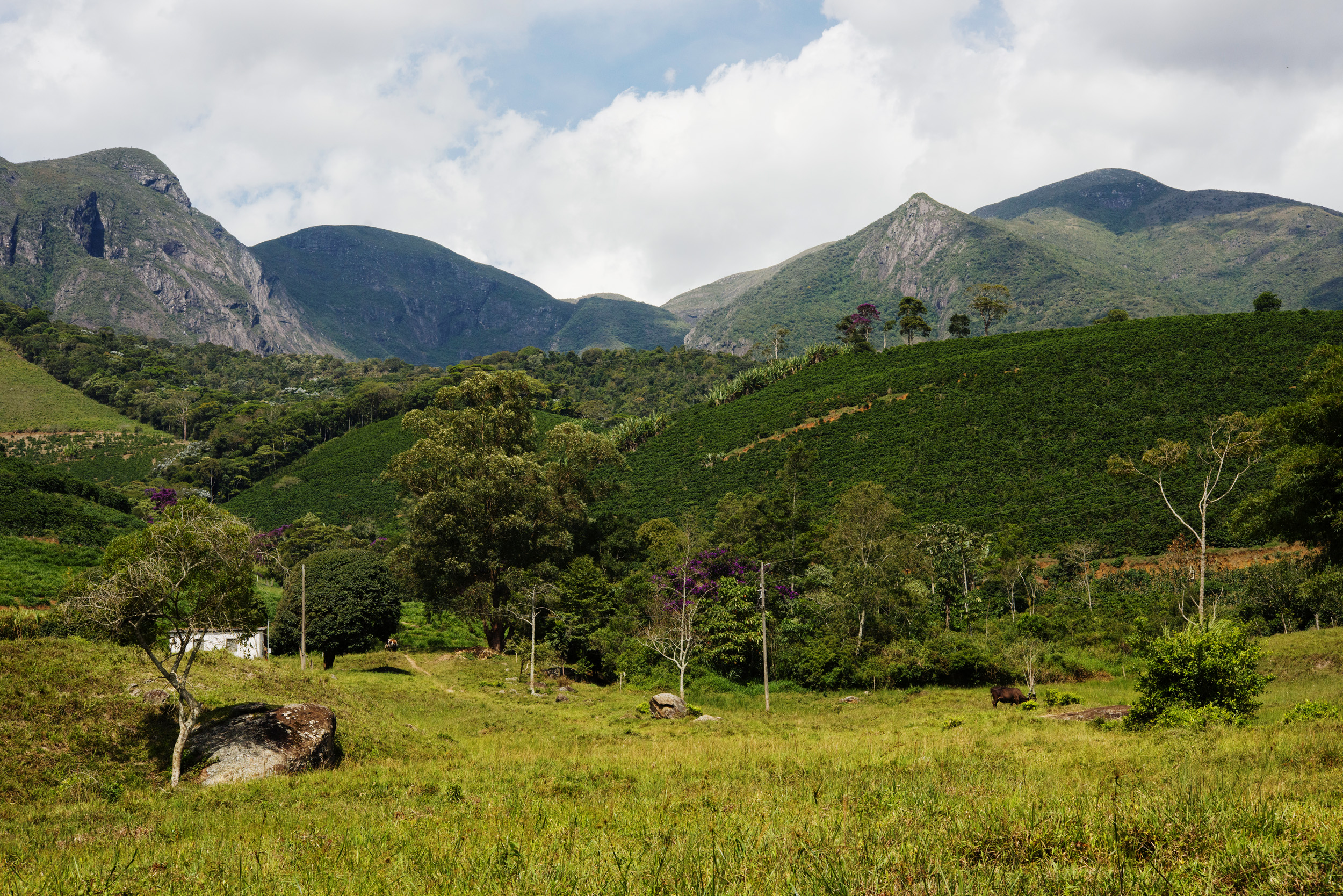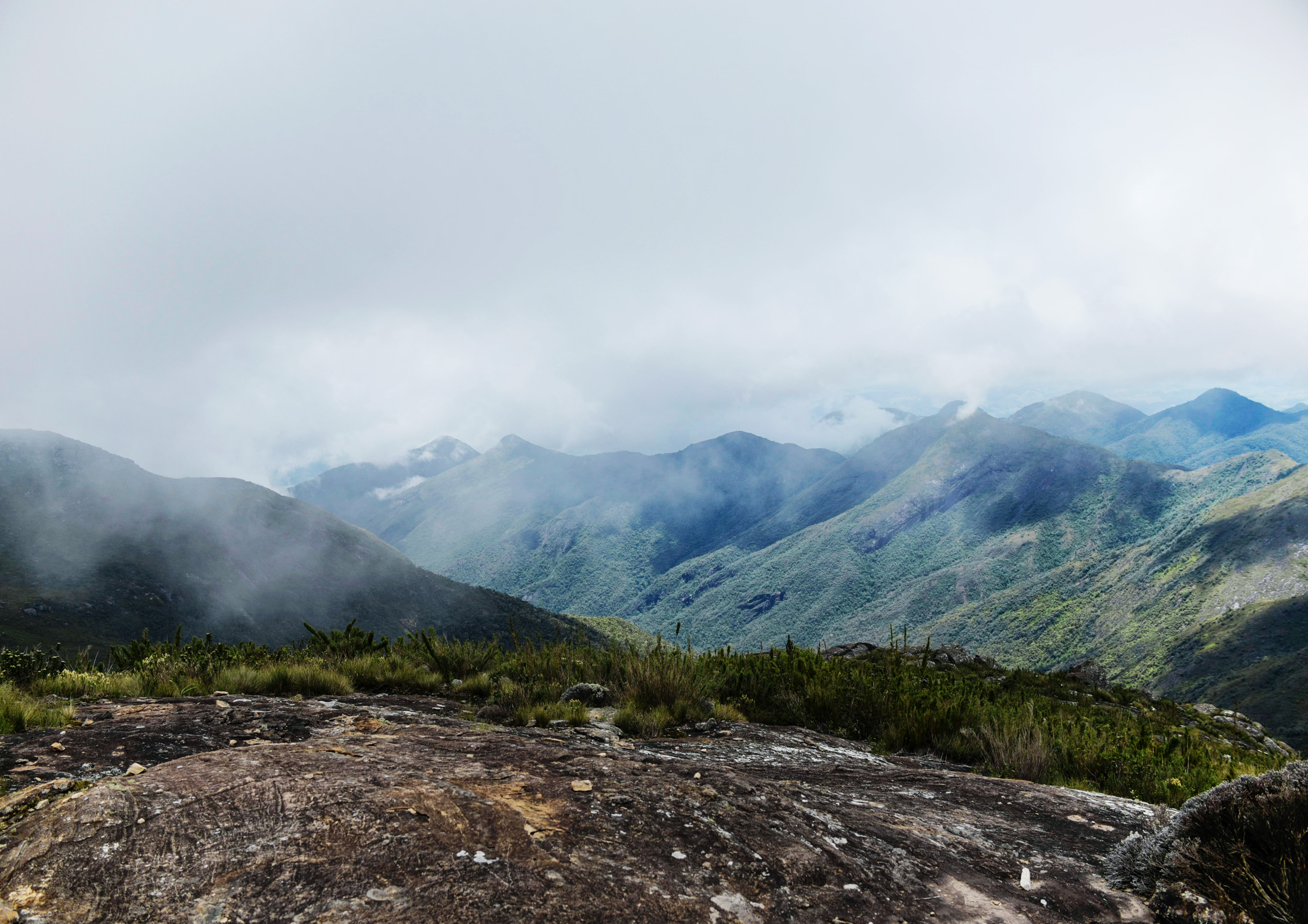Harvest: May–December
Altitude: 700–1,500 metres (2,300–4,920 feet) above sea level
Rainfall: 1,200–1,600 millimetres (47–63 inches)
Temperature: 19–22°C (66–72°F)
Caparaó, a small coffee-growing region, straddles the border between Minas Gerais and Espírito Santo. It is characterised by small family-run farms growing typically Brazilian varieties such as Yellow Catuaí. The region is named for the Serra do Caparaó, a mountain range which was established as a national park in 1961. Caparaó contains some of Brazil’s highest mountains, including Pico da Bandeira, which reaches 2,892 metres above sea level.
 Coffee growing on the rounded foothills of the Caparaó mountains.
Coffee growing on the rounded foothills of the Caparaó mountains.
Caparaó was awarded a Denominação de Origem (DO) in February 2021. The region has been recognised for its uniquely floral and juicy coffees, and it is described by Felipe Croce from FAF as ‘the Ethiopia of Brazil’ for its climate and cup profile. The DO specifies that coffee from the region should be complex, with at least five identifiable aromas; typical aromas included in the DO classification include molasses, vanilla, citrus, and yellow stone fruit (INPI 2021).
It was not always thus, however. In the early 2000s, Caparaó had a reputation for producing low-quality coffee. Due to the region’s wet climate, its coffee trees flower at different times throughout the year. This makes it more difficult to harvest only ripe fruit, as the cherries mature at different times. Frequent rains also make it hard to dry coffee properly, leading to mould or other fermentation defects.
Since then, the region has managed to parlay those challenges into strengths. The cool, wet climate means that fruit matures slowly, developing complex aromas. The climate and high altitudes favour yeasts over bacteria during fermentation, contributing to the distinct flavour profile of Caparaó coffee (Martinez et al 2021).
 Fog rolls in over the Pico da Bandeira. The cool, wet climate at high altitudes helps to develop the unique flavour profile of coffee from the region.
Fog rolls in over the Pico da Bandeira. The cool, wet climate at high altitudes helps to develop the unique flavour profile of coffee from the region.
